Use Russia Travel Guide 2025 to map your Moscow stay, starting with ostankino and its courtyards, then expanding to nearby cathedrals and current walking routes for your family.
This guide offers category picks across architecture, markets, and outdoors. It presents a current list of venues with price ranges and validity notes, so you can plan your day without overpaying. Each entry includes a simple rule for timing and the right arrival window.
Itinerary snapshot: begin at ostankino, stroll the courtyards, then walk to a nearby park loop and a riverside walkway. If you arrive via аэропорт, use a direct metro link to drop you at your hotel. The walking sections total 6–9 km per day, with pauses at bakeries and kid-friendly stops. The guide highlights many suitable options and notes which are pricey and which fit a tighter budget.
Practical tips: book ahead for popular spots; use offers in the app; passes may have limited validity; check the validity window before purchase. The walking routes are mapped to comfortable paces; you can customize by family size, whether you want to cover one outdoor courtyard or do a longer walking loop of 2–3 hours.
Ready to explore? Your plan can be tailored to interests, from architecture to family-friendly routes, with specific addresses and walking times. This guide helps you prioritize options in a single category and keeps the pace manageable for a longer trip.
Russia Travel Guide 2025
Choose moscow for your russia travels this month to balance culture, price, and nightlife. Base yourself in a central district to save rubles and walk to the Kremlin, Red Square, and the Bolshoi Theatre, then tailor day plans for a couple or solos alike. Stroll moscow’s streets lined with neoclassical facades to feel the city’s rhythm right away.
Where to stay: hostels offer 700–1500 rubles per night, while mid-range hotels run 3500–7000 rubles. In pricey and expensive districts expect 10000–20000 rubles for a comfortable room; rent a cottage on the outskirts for a quieter retreat and easier day trips.
Suggested 4‑ to 7‑day plan: day one hits Red Square, St. Basil’s, and GUM; day two explores the Tretyakov Gallery and Zamoskvorechye; day three a day trip to Sergiev Posad or Kolomna for meat markets and pastry; day four strolls along the Moscow River and a nightlife crawl in Kitay-Gorod. If you travel as couples, reserve dinner spots in advance to avoid crowds.
Getting around: the metro and buses connect every borough; buy a Troika card to reduce fare; keep your phones charged for offline maps. For longer hops, airways operate frequent flights to St. Petersburg or Kazan, but local trains are cheaper and comfortable; today you can switch between fast rail and slow routes depending on budget. If a card or ticket machine is broken, ask staff for a manual option.
Eating well means sampling cheap staples and meat dishes: borsch with meat, pelmeni, and syrniki for breakfast. Markets and casual eateries lined with stalls offer meals from 400 to 900 rubles per person; luxury dinners push into the expensive range, but you can still dine well for under 1500 rubles in many neighborhoods.
Outside Moscow, consider a cottage or countryside stay in the Vladimir or Sergiev Posad counties, where day trips connect by rail; these options suit working travellers looking for quiet spaces: a small cottage with a kitchen can price around 5000–8000 rubles nightly in off-peak times. Bring a compact charger, spare SIM, and a travel adapter so you stay connected on every outing.
Accommodations for groups: hostels with dorms help travellers connecting with others; couples often choose private rooms with ensuite; always ask for certain amenities like Wi‑Fi, kitchenette, and easy transit access. Lines of museums and galleries offer student and senior discounts; bring copies of IDs and plan visits during weekdays when queues are shorter.
Practical tips: if you arrive today, exchange some rubles at official booths, then use ATMs with a familiar currency card. Compare price tags in rubles across venues, watch exchange rates, and avoid overly expensive venues near central squares. Pack comfortable footwear for lined streets and cobblestones, and reserve well in advance if you aim for popular venues in peak months.
Must-Visit Destinations, Practical Tips, Itineraries, and Sightseeing & Activities Budget in Russia
Begin with Moscow’s Red Square and Saint Petersburg’s Hermitage to anchor your plan, then add the Golden Ring towns for historic depth and authentic courtyards, lanes, and storefronts you won’t forget.
-
Moscow – Red Square, the Kremlin, and the Armoury with names like GUM and Zaryadye Park. Add a sunset stroll along the historic Arbat Lane, a gallery visit in Tretyakov, and a quick stop at VDNKh to see pavilions that echo decades of craft and design.
-
Saint Petersburg – Hermitage Collection, Church of the Savior on Spilled Blood, Peter and Paul Fortress, and Nevsky Prospekt for savory and sweet cafés. Don’t miss the Summer Garden and a ballet or opera performance at the Mariinsky Theatre.
-
Golden Ring towns – Vladimir, Suzdal, and Yaroslavl offer historic churches, wooden architecture, and quiet courtyards. These stops provide different tempos, from bustling markets to hushed monasteries, all within a comfortable day trip from Moscow.
-
VDNH and nearby galleries – a modern showcase of pavilions, lanes, and open spaces. It’s worth a half- or full-day visit, especially for photo opportunities and a quick bite in savory cafés.
-
Lakes & northern routes – lakes Ladoga and Onega regions, plus Karelia’s forest trails, offer slow days for nature lovers. Use trains to hop between towns and enjoy scenic views during longer connections.
-
Practical touchpoints – carry a card for most payments, but keep some cash in small notes for markets and cafés. ATMs are everywhere; look for сбербанк machines for reliable withdrawals.
Practical tips help you manage time and expenses. Compare prices at hotelscom for midrange stays near transit hubs, and watch for sales in shoulder months to stretch your budget. Carry a letter or note with hotel and transport confirmations, and keep a simple month-long plan to track spends, especially on trains and museums.
-
Money & payments – use a debit or credit card widely, but keep a reserve of rubles for small shops. ATMs are common; avoid remote kiosks in remote towns. The сбербанк network is reliable for withdrawals and balance checks.
-
Trains – high-speed routes connect Moscow and Saint Petersburg in about 4 hours; overnight options save time and hotel costs. Book in advance to lock favorable price and seat options.
-
City transport – day passes for metros and buses save money. Expect occasional lane closures and busy times near central sites; plan a morning start to beat crowds.
-
Food – savor savory dishes and simple butter-based snacks in markets and cafés. Budget-friendly meals in casual spots often include borscht, pelmeni, and hearty soups.
-
Costs & planning – budget travelers can spend thousands of rubles per day on transport and admissions, while midrange travelers may allocate more for guided tours and premium museums. Details vary by season, so check price boards and deals regularly.
-
Shopping & deals – scout for deals and seasonal sales at museums gift shops and city centers. Discounts are common for students and seniors in many venues.
Itinerary blueprint helps you pace your days. A balanced plan lets you cover highlights, enjoy local markets, and still leave breathing room for spontaneous discoveries.
-
Day 1–2: Moscow core – Red Square, Kremlin Armoury, Cathedral Square, and a stroll through Arbat. Evening at a savories-and-pastries café near a courtyard market.
-
Day 3: VDNKh + riverside stroll – morning gallery visits, lunch at a modern canteen, and a quick tram ride to a lakeside view in a nearby park.
-
Day 4: Moscow to Saint Petersburg – fast train, afternoon stroll along the Neva, and a first glimpse of the Hermitage exterior.
-
Day 5: Saint Petersburg highlights – Hermitage morning, Church on the Spilled Blood, and a canal ride to see the city from the water.
-
Day 6: Golden Ring day trip – Vladimir and Suzdal for ancient churches, wooden courtyards, and quiet lanes away from the city bustle.
-
Day 7: Optional add-ons – choose a lazy morning at a gallery or a train to a lakeside town for a relaxed end to the trip.
Sightseeing & Activities Budget: plan by category to stay on track. A typical day with museum entries, a guided walk, and local meals sits in a broad range, but you can size your costs with these references:
-
– Kremlin entry, Hermitage access, and occasional guided walks: roughly 1200–3600 RUB per person, depending on the guide and concessions.
-
Transit – metro passes, light rail, and intercity trains: 400–1400 RUB per day for urban travel; intercity trains vary by class and route, with 3500–8000 RUB common for Moscow–Saint Petersburg segments.
-
Food – casual lunches 400–900 RUB, dinners 800–1800 RUB; markets offer cheaper savory options and fresh pastries, often with butter-rich flavors.
-
Accommodations – midrange hotels near transit hubs typically 6000–15000 RUB per night; use hotelscom to compare deals and percentages off in off-peak months.
-
Overall budgeting note – estimate thousands of rubles per day for a comfortable pace; lighter days can bring expenses down, and longer stays in a single city can unlock multi-site discounts.
Whether you chase historic landmarks, modern galleries, or lakeside relaxation, you’ll find a clear way to manage spending across cities, trains, and sights. The goal is smart choices: choose a few must-see names, reserve major tickets ahead, and leave room for unscripted discoveries everywhere.
City-by-City Budget: 3–5 Days in Moscow, St. Petersburg, and Kazan
Recommendation: 4 days total, with Moscow 2 days, St. Petersburg 1 day, and Kazan 1 day, to balance iconic sights, local connections, and time efficiency.
Moscow – 2 days: stay in a central district such as Tverskoy or Arbat to keep walking between sights. Start with a morning stroll to Red Square, then explore GUM and the surrounding area. Enjoy baked pastries at a nearby bakery and grab a drink at a locals-favorite café. For a low spend, use the metro and walk the core routes; you can find ATMs near major stations and keep your wallet safe with a compact card. In the afternoon, visit the Kremlin grounds and nearby markets, where stylish shops sit alongside common eateries offering affordable bites. If you want a broader view, consider a half-day driver-assisted trip to VDNKh or a couple of outlying towns called into scope for contrast. Evening options include street performances near Arbat, or a low-key show at a small venue that fits your budget.
St. Petersburg – 1 day: walk along the Neva, stop at Palace Square, and wander the Hermitage district area to soak in the city’s atmosphere. A short boat ride on the river adds a relaxing break, price-friendly when booked in advance. Along Nevsky Prospekt, sample pastry from local bakeries and drift into casual cafés for a light drink and light bites. Museums and cathedrals can be layered into a compact circuit, with downtime in sunny courtyards or along Peter and Paul Fortress grounds. For a splash of high-end style, try a modest river cruise at sunset or a brief evening show at a cultural venue, keeping within a sensible budget.
Kazan – 1 day: begin on Bauman Street for a lively mix of towns-vibe and heritage, then head to the Kazan Kremlin to see the mix of Tatar and Russian influence. Taste a few pastry options at neighborhood bakeries and chat with locals to pick up tips on the best low-cost meals. The city offers a range of types of cafés and eateries–from quick bites to sit-down spots–so you can tailor your day. If you want more reach in less time, hire a driver for a few hours to cover nearby landmarks or nearby towns called into your route, then walk the riverfront in the evening to cap your trip with a memorable, relaxed vibe that suits a couple traveling on a budget.
| City | Days | Focus | Approx. Daily Spend (USD) |
|---|---|---|---|
| Moscow | 2 | Red Square, Arbat, metro routes, bakeries, district life | 45–65 |
| St. Petersburg | 1 | Neva stroll, Palace Square, Nevsky area, optional boat ride | 40–60 |
| Kazan | 1 | Kazan Kremlin, Bauman Street, pastry tasting, riverfront | 30–50 |
Cheapest Intercity Travel: Trains, Buses, and Budget Flights
For the main long-distance moves, pick a platzkart ticket on the Moscow–St. Petersburg route to ride a butter-smooth train and save money. This option sits among the cheapest ways to connect popular cities across the territory, and it pairs well with flexible plans for travels throughout Russia.
- Trains
- Types and names: platzkart (3rd class), kupe (2nd class), compartments (1st class) cover a wide price spectrum; high-speed Sapsan is faster but costs more.
- Prices and ranges: Moscow–St. Petersburg platzkart typically 1,800–2,600 rubles; kupe around 2,800–5,000 rubles; compartments 4,000–7,000 rubles; overnight options let you ride and save a hotel night – a clear win for brave budget travelers.
- Travel times: 4.5–8 hours on mainline trains; night trains let you ride right through and wake up near your destination.
- Tips to manage: book 2–3 weeks ahead, check multiple days, and compare the official RZD site with trusted apps to avoid extra fees. If you land at vnukovo, use the airport train or metro connection to reach the city’s rail terminals and keep plans flexible.
- Buses
- Overview: long-distance buses cover routes that trains don’t serve as directly, with day and overnight options that fit tight budgets.
- Prices and times: typical Moscow–St. Petersburg bus fares 1,400–2,300 rubles; travel times 8.5–11 hours depending on traffic and stops.
- Practical notes: look for reinforced luggage limits and onboard amenities (Wi-Fi, power outlets) on popular carriers; booking in advance reduces risk of sold-out seats.
- Who it suits: great when you want to explore smaller towns along the way or when a later departure aligns with parking at the terminal. It’s a reliable option for multiple legs in a single plan.
- Budget Flights
- Key players: Pobeda leads budget city-pair services with frequent promos; consider other low-cost options for flexible dates.
- Prices and planning: Moscow–St. Petersburg flights can start around 2,000–3,000 rubles during promos; peak periods rise, but careful timing yields solid savings.
- Timing and routing: flights win on speed but lose out on airport transfers and security time; match flight choices with rail or bus segments for a multi-leg trip that minimizes total travel time and costs.
- Booking tips: compare nearby airports and consolidate with rail for a longer rideload that keeps costs down and options open.
Payment and deals: use Сбербанк cards or wallets where available to simplify payments and snag occasional local promos. Prices are valid for travel across the main routes, but discounts appear across multiple platforms, which helps you save while staying flexible in choosing dates and times.
Practical tips to plan yourself: start with the main route between Moscow and St. Petersburg, then explore adjacent connections in the territory to find a surprising mix of savings. Parking at terminals is often easy, with short-term and long-term options adjacent to major stations. If you’re landing at vnukovo, a quick transfer to the metro network unlocks quick access to the central rail hubs and long-distance services, making it easier to manage a multi-leg itinerary.
Useful takeaways: choose the right option based on your priorities – price, comfort, or speed. Multiple routes exist, and a careful compare-and-plan approach yields the best combination of cost and reliability. The history of cheap intercity travel shows that small, steady savings add up across a few legs, so don’t overlook overnight trains or early-bird promos. When you map the routes, you’ll discover how easy it is to explore popular cities like Petersburg, make a few detours to lesser-known towns, and still stay within a modest budget – a surprisingly efficient way to travel right across the main corridors.
Extra note: baked pastries and coffee at stations can brighten a day on longer rides, turning a cost-conscious plan into a pleasant experience without sacrificing value. Consider a gradual, well-rounded plan that incorporates multiple transport types, allowing you to manage time, costs, and comfort with confidence.
Visa, Insurance, and Safety for 2025
Get your visa plan locked 60 days before departure by checking the official consulate site. For most travelers, a standard tourist visa requires an invitation and supporting documents; the migration card is required on entry and must be kept until departure. Ensure your passport remains valid for at least six months beyond your travel date and has two blank pages. Prepare digital and paper copies of all documents and have a contact plan with your country’s embassy in Moscow when you wander around historic centers like myasnitskaya and nearby courtyards.
Know your visa options and updated rules for 2025. Categories include tourism, business, humanitarian, and transit; processing times vary by consulate region. Expect a two to four week window for standard tourist applications and longer for some nationalities. Prepare a concise itinerary, proof of funds, and confirmed accommodations to support your request. If you plan multi-country trips, consider baltics as an option and verify border rules in advance to set expectations for timing and paperwork, which helps avoid delays.
Carry two payment options: cash in local currency and a card with Visa or Mastercard. The visamastercard symbol is widely accepted in major cities; enable payment alerts to avoid blocked transactions during long train trips or airways connections. Keep a backup plan such as a prepaid card and a digital wallet to use around stations, hotels, and shopping areas.
Buy comprehensive travel insurance before departure. Look for medical cover of at least 100,000 USD and evacuation coverage around 300,000 USD, plus options for repatriation and trip disruption. Confirm coverage for pre existing conditions if needed and for adventure activities you might try. Keep the policy number and 24/7 assistance hotline handy. Compare plans with add-ons for delays and lost luggage, and read the small print on exclusions to avoid gaps during travel in Russia and neighboring regions.
Safety tips: register with your embassy on arrival, stay in well lit areas, and be mindful in busy transit hubs. Protect valuables in crowds and use a money belt in crowded places around major venues. For travel by train and airways, verify schedules on updated timetables and track changes via official apps. When visiting tsaritsyno or other historic sites, follow posted rules, stay with companions, and plan daylight hours if possible. If you target day trips to nearby regions or baltics, map routes in advance and keep plans flexible. The right preparation and clear advice help you adapt quickly to changes in border rules or flight schedules.
7–10 Day Itinerary: Moscow + St. Petersburg on a Tight Budget
Start in Moscow for two days, then take a night train to St. Petersburg to maximize sightseeing while keeping lodging affordable. Keep a visamastercard handy for hostel deposits and street meals. Ticket checks at stations are routine, so carry digital copies of passes and stay alert on platform signage. This approach helps counter budget challenges and keeps your plans flexible.
Moscow’s first two days focus on walkable routes along the streets around Red Square and the Kremlin walls from the outside, followed by a rest in Alexander Garden. If you want a museum fix, you can choose one museum and pair it with free or low-cost gallery visits elsewhere. The environment around central sights is lively, and should you prefer, join a free walking tour to learn about history without overspending.
These days also cover several districts with distinct vibes: Tverskoy, Kitay-Gorod, and Zamoskvorechye. Each district has plenty of affordable eats and photo opportunities, and the transport network lets you hop between sites quickly. Typically, you’ll spend full days exploring and still have time for a relaxed evening. Costs vary, but you should plan for modest daily spends.
To reach St. Petersburg, choose a night train or an early day trip by rail; the regular routes are reliable and often economical for travelers on a budget. The trip includes a long ride, but you arrive rested and ready to walk. In SPB, start with Palace Square, then the Hermitage gallery and the adjacent museum complex. The Church on Spilled Blood and Nevsky Prospekt are nearby, and a stroll along the Neva delivers a sense of grandeur in moscows architecture mirrored here. For type of transport, balance comfort with price to keep the schedule flexible.
SPB day plan integrates Nevsky Prospekt, the Church on Spilled Blood, and the Peter and Paul Fortress, all within easy reach by foot or tram. The Hermitage gallery is vast; you can see its main highlights in a full morning and return for a shorter second visit. There are plenty of free viewpoints along the Neva and several small galleries that cost little, which helps the budget. Costs vary by season, but you can manage with a modest daily spend.
Budget tips: start with kasha breakfasts at hostels or markets, then refill in markets for lunch. Use the metro network for fast, cheap travel, but beware confusing signs and crowded cars during rush hours; local advice helps you navigate. Remote neighborhoods offer calmer vibes and cheaper cafés, while everyone can share kitchen space to cut costs. A few checks on transit cards and passes keeps things smooth.
With a flexible 7–10 day plan, you get plenty of time for iconic sights and hidden corners, and you can adjust if costs rise or you want more museum time. It includes major landmarks and several lesser-known galleries, markets, and parks. Start with Moscow, move to St. Petersburg, and allow a few spare hours to vary the pace. This should suit travelers who want grand architecture without overspending.

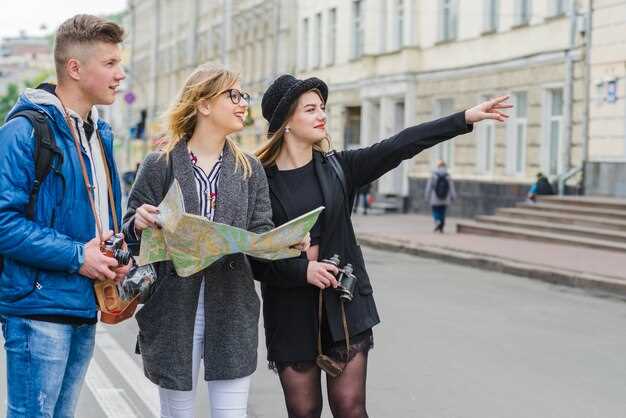 Russia Travel Guide 2025 – Essential Destinations, Practical Tips, and Itineraries">
Russia Travel Guide 2025 – Essential Destinations, Practical Tips, and Itineraries">

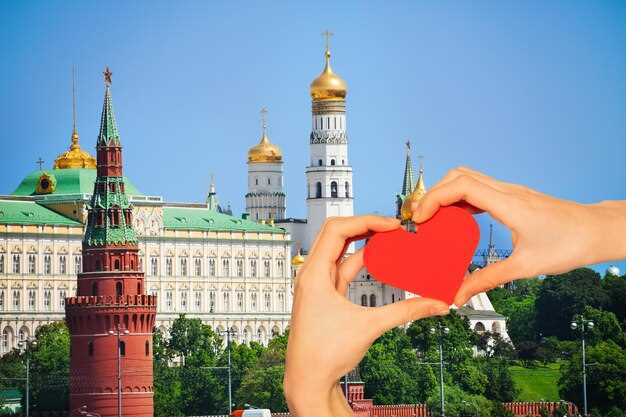
 Trains from Moscow – Schedules, Routes, and Ticketing Tips">
Trains from Moscow – Schedules, Routes, and Ticketing Tips">
 Your Travel To-Do List – The Golden Ring of Russia – Top Sights, Itinerary & Tips">
Your Travel To-Do List – The Golden Ring of Russia – Top Sights, Itinerary & Tips">
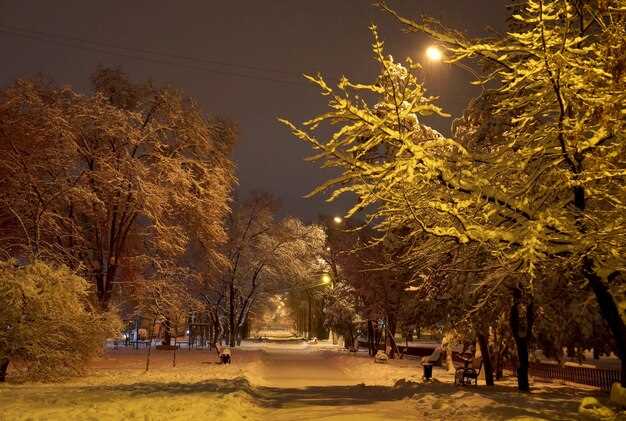 2025 Recommended Fall Scenery in Moscow — Updated October">
2025 Recommended Fall Scenery in Moscow — Updated October">
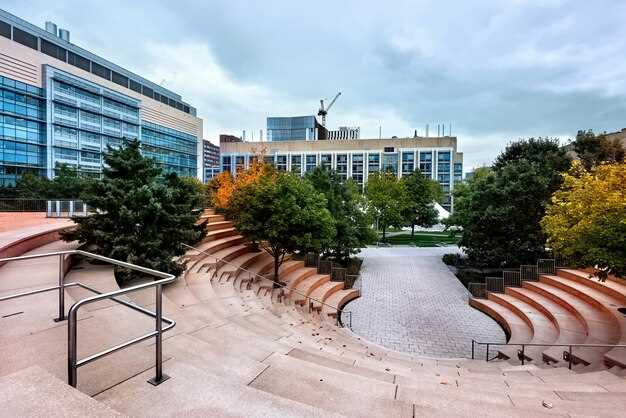 Kazan Federal University (KFU) – Programs, Admissions &">
Kazan Federal University (KFU) – Programs, Admissions &">
 World Youth Festival Assembly 2025 – Global Youth Summit & Innovation">
World Youth Festival Assembly 2025 – Global Youth Summit & Innovation">
 Generation Z’s Digital Revolt – HSE Examines a Million Nepali Social Media Messages">
Generation Z’s Digital Revolt – HSE Examines a Million Nepali Social Media Messages">
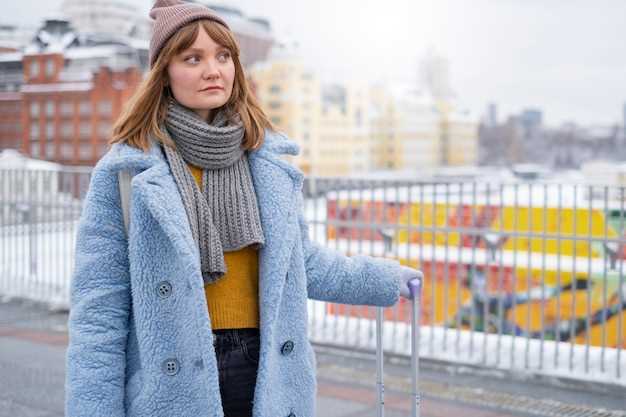 Best Time to Visit Russia – Seasonal Weather and What to Wear">
Best Time to Visit Russia – Seasonal Weather and What to Wear">
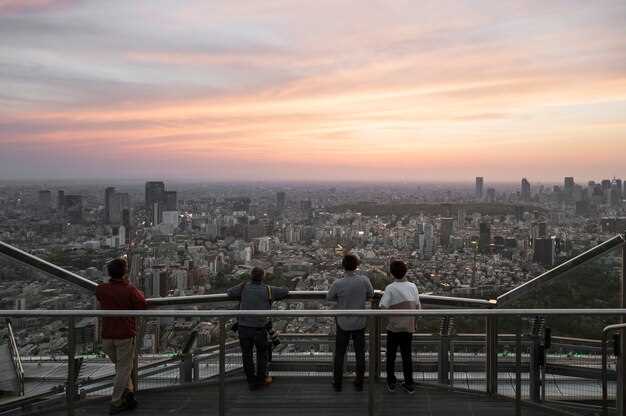 Best Moscow Rooftop Restaurants – Sky-High Dining with City Views">
Best Moscow Rooftop Restaurants – Sky-High Dining with City Views">
 2854№484 Marriage Proposal in Moscow – The Ultimate Guide to Planning a Dream Proposal in the Russian Capital">
2854№484 Marriage Proposal in Moscow – The Ultimate Guide to Planning a Dream Proposal in the Russian Capital">
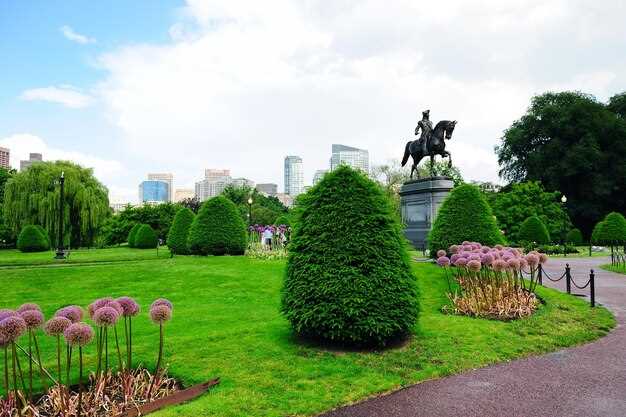 Victory Park at Poklonnaya Hill, Moscow – Guide and History">
Victory Park at Poklonnaya Hill, Moscow – Guide and History">